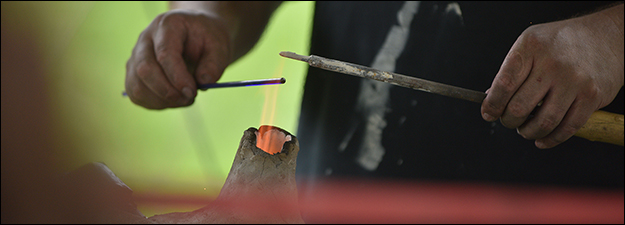Animal Languages
Sponsoring Organization(s)
Medieval Association of the Midwest (MAM)
Organizer Name
Alison Langdon
Organizer Affiliation
Western Kentucky Univ.
Presider Name
Alison Langdon
Paper Title 1
Bark Like a Man: Performance, Identity, and Boundary in Old English Animal Voice Catalogs
Presenter 1 Name
Robert Stanton
Presenter 1 Affiliation
Boston College
Paper Title 2
"Kek Kek": Translating Birds in Chaucer's Parliament of Fowls
Presenter 2 Name
Michael Warren (Karrer Travel Award Winner)
Presenter 2 Affiliation
Royal Holloway, Univ. of London
Paper Title 3
Ymagyned and Compyled: The Nightingale's Apparitional Voice
Presenter 3 Name
Carolynn Van Dyke
Presenter 3 Affiliation
Lafayette College
Paper Title 4
The Role of Interspecies Communication and Animal Theology in Saving the Medieval Christian
Presenter 4 Name
Anastasija Ropa (Edwards Memorial Travel Award Winner)
Presenter 4 Affiliation
Latvian Academy of Sport and Education
Start Date
12-5-2016 1:30 PM
Session Location
Bernhard 210
Description
Language is one trait by which medievals defined humans against other animals, yet at the same time many animals were understood to possess language of their own and in some cases to participate in human language. This session will explore questions such as: What kinds of communicative strategies did medievals recognize in the animal world, and how were they interpreted? How was human meaning imposed on animal vocalizations? How were animals themselves used as symbolic language in visual texts such as the Bayeux tapestry or manuscript illuminations?
Animal Languages
Bernhard 210
Language is one trait by which medievals defined humans against other animals, yet at the same time many animals were understood to possess language of their own and in some cases to participate in human language. This session will explore questions such as: What kinds of communicative strategies did medievals recognize in the animal world, and how were they interpreted? How was human meaning imposed on animal vocalizations? How were animals themselves used as symbolic language in visual texts such as the Bayeux tapestry or manuscript illuminations?


